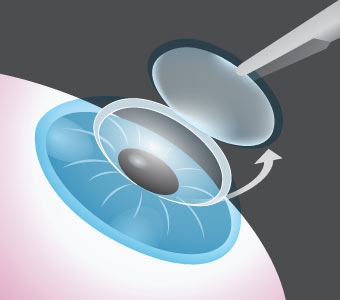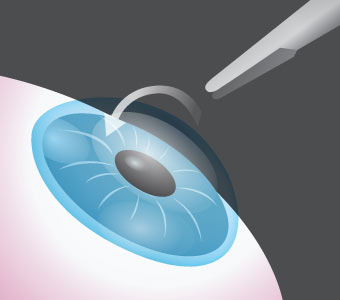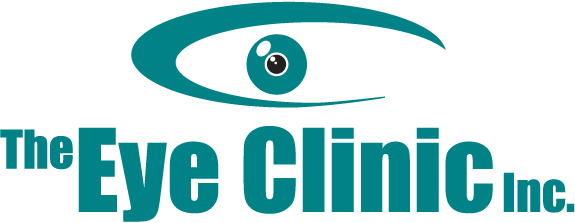Bladeless LASIK Vision Correction Surgery
LASIK (LAser In-Situ Keratomileusis)
What is Bladeless (All Laser) Lasik?
With the Bladeless Lasik procedure, a thin layer of the cornea is lifted to create a "flap" that stays connected on one side. Historically, this flap was created with a blade. Through technologic advances the flap is now created with the femtosecond laser. The femtosecond laser produces a consistent and centered flap each time. Next the excimer laser sculpts the cornea with a cool, ultraviolet light. Finally, the "flap" is returned to the original position for a quick, natural recovery.

Computer WaveScan Map Cornea

The laser beam creates a dissection plane by forming an interconnecting series of bubbles

The surgeon will open the cornea flap

Excimer laser is used to reshape and correct the refractive vision

The cornea flap is closed

After surgery, the patient can see normally
Refractive laser surgery now offers an alternative to glasses and contact lenses in correcting vision. It can correct myopia (nearsightedness), hyperopia (farsightedness) and astigmatism by changing the shape of the cornea with a cold laser beam.
Changing the shape of the cornea with the excimer laser is the most technologically advanced method of corrective surgery used on the eyes. It offers most people who currently wear glasses or contact lenses the opportunity for good vision without any other form of correction.
The excimer laser is a charged mixture of argon and fluoride gases in a mirrored tube to produce a beam of ultraviolet light. This beam is unique because it has the ability to break the molecular bonds between tissue and vaporize tissue, a microscopic layer at a time. The laser can sculpt tissue with no effect on the underlying and surrounding tissue. This makes it ideal for changing the shape of the cornea, the eye's front window, to reduce or eliminate focusing problems.
How Does It Work?

For people with nearsightedness the eye is usually too long and the focus point is in the front of the retina. The cornea is easily modified to correct this problem by changing its shape. The change in shape in the curvature of the cornea counteracts the excess length of the eye. For people with farsightedness the eye is usually too short and the focus point is behind the retina. The cornea shape is modified to counteract the short length of the eye.
For people with astigmatism, the cornea is normally "egg shaped" as opposed to round. In this case, the cornea is modified by reshaping in order for it to focus properly.
The exact details of the modifications to be made to your cornea are calculated based on a comprehensive eye examination. The details are programmed into the laser's computer. A mechanical shutter regulates the laser beam and ensures that precise sculpting of the cornea takes place. During a procedure, the laser is under the complete control of the surgeon at all times.
The laser is extremely precise and in fact a few weeks after having had the procedure, there is little or no evidence that lasering has taken place, other than the fact that you are now enjoying normal vision.
Who Qualifies for the Surgery?
The FDA has approved that the laser can be used to correct up to twelve diopters of myopia, four diopters of hyperopia, and up to five diopters of myopic astigmatism. You will receive a thorough eye examination by your doctor before you are scheduled for the procedure. The results of the exam will confirm your prescription and your potential for effective treatment. A detailed topographical map of your eye is made right in our office. This is a computer generated color schematic image of the surface of your cornea which helps the surgeon define the precise treatment you will require to correct your vision. This surgery will not eliminate the need for reading glasses which is a normal function of the aging process.
